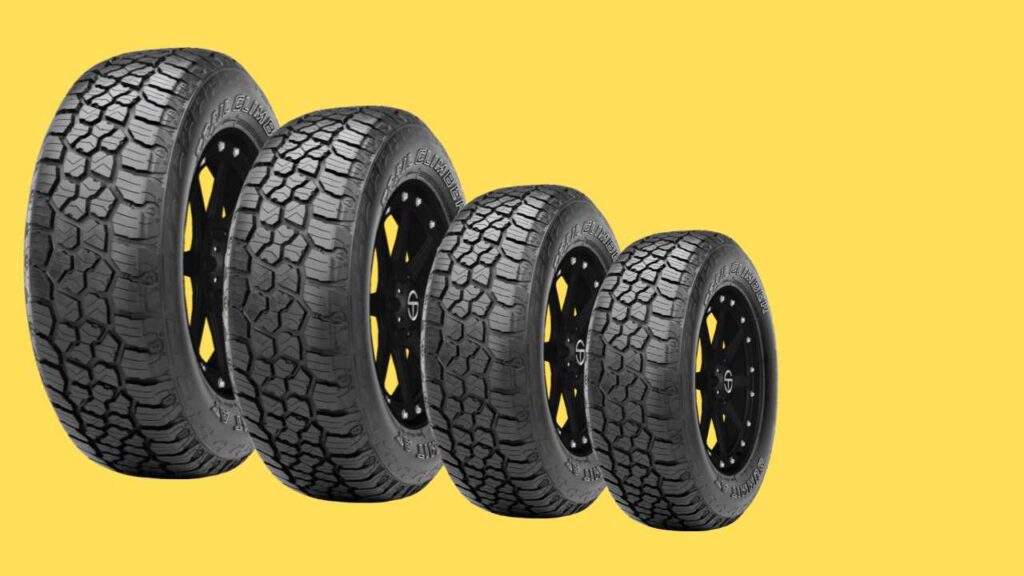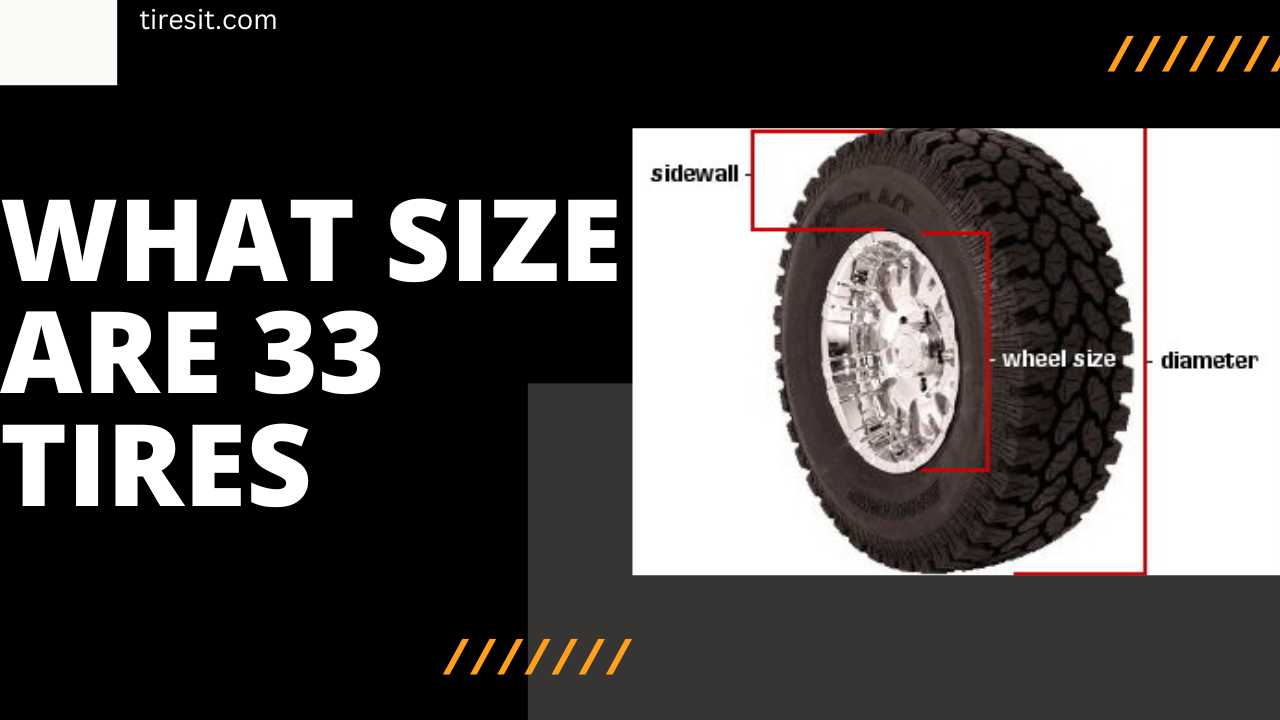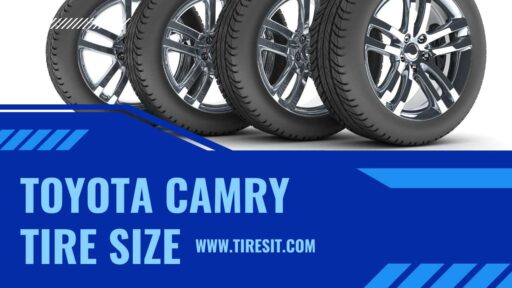Looking for information What size are 33 tires? Our website provides detailed insights on tire size, features, and recommendations for your specific needs.
Whether you’re wading through muddy backroads or pushing the limits on a mountain pass, the choice of tires can make all the difference. For a growing number of off-road aficionados and adventure travelers, 33-inch tires have become an intriguing option to amplify their vehicle’s capabilities. But what is the hype surrounding these tires, and why are they gaining traction in the automotive community? This extensive blog post will explore all angles – from the decision to switch to 33-inch tires to their installation and the subsequent impacts on your vehicle’s performance.
The Basics of What size is 33 tires: An Introduction
Switching to 33-inch tires is more than just a move; it’s a statement. These tires, known for their ruggedness and all-terrain prowess, have found favor among those who seek to overcome every obstacle nature throws their way. For the uninitiated, a 33-inch tire is one that measures 33 inches in diameter when mounted and inflated. This usually equates to a tire that is larger in both height and width compared to stock tires, commanding attention both on and off the road.
Who Should Consider 33-Inch Tires?
Freethinkers. Mavericks. People with an insatiable wanderlust. This size is ideal for anyone who wants a tire that can handle diverse landscapes. From the sandy deserts to the rocky mountains, these tires offer a balance between adequate size and practicality for everyday driving.
The Aesthetic Appeal
One of the most immediate changes you’ll notice is the aesthetic impact. The stance of your vehicle becomes more purposeful, lending a ‘bigger is better’ vibe. It’s more than just looks, though; the aesthetic signifies a commitment to traversing new terrains with confidence and style. Who doesn’t want that?
Performance Upgrades: An Overview
The benefits of switching to 33-inch tires are plenty, and the most significant is arguably performance. But what exactly changes? The answer depends on your vehicle’s model and year, but in general, you can expect upgrades such as:
- Improved ground clearance – With a larger tire diameter, there’s more distance between your vehicle’s undercarriage and the ground, reducing the risk of getting stuck or damaged by obstacles.
- Enhanced traction – The increased surface area in contact with the ground allows for better grip, especially on uneven terrain. This is a game-changer for off-roaders.
- Better load-carrying capacity – These tires can handle heavier loads without compromising stability, making them an excellent choice for overlanding and towing.
- Increased fuel efficiency – Contrary to popular belief, 33-inch tires can actually improve gas mileage. The larger circumference allows the vehicle to travel more distance per revolution, reducing engine strain and optimizing fuel consumption.
The Installation Process
Now that you’re sold on the idea, how do you make the switch? While it is possible to install 33-inch tires yourself, we highly recommend seeking professional help. A tire shop or mechanic will have the necessary tools and expertise to ensure a smooth and safe installation. Plus, they can advise you on any additional upgrades or adjustments that may be needed for your specific vehicle.
Potential Challenges and Solutions
As with any upgrade, there are some potential challenges to consider before making the switch. These include:
- Clearance issues – 33-inch tires may cause rubbing against fenders or wheel wells, particularly on vehicles with minimal lift kits. This can lead to damage or instability if not addressed properly.
- Speedometer accuracy – With larger tires, the speedometer readings may become inaccurate. This can be adjusted by reprogramming the vehicle’s computer or using a speedometer recalibration tool.
- Potential gear ratio changes – Depending on your vehicle’s make and model, 33-inch tires may cause a decrease in acceleration and power if the gear ratios are not adjusted accordingly.
Fortunately, these challenges have solutions.
Understanding Tire Sizing as You Cross the 33-Inch Mark
Tire-sizing can be complicated, but it’s crucial to ensure that your new tires fit without affecting performance. When you opt for 33-inch tires, you’re not just changing the number – you’re altering a range of metrics that have a domino effect on how your vehicle handles and operates. Understanding these metrics will help you make informed decisions and avoid potential issues.
Aspect Ratio
The aspect ratio, also known as the tire profile or series, is an important factor to consider when changing tire sizes. It refers to the height of the sidewall expressed as a percentage of the width of the tire. For example, if your new 33-inch tires have an aspect ratio of 65, it means that the sidewall height is 65% of the tire’s width.
As you increase in tire size, the aspect ratio decreases. This means that your tires may appear wider and flatter than before. While this can give your vehicle a more rugged and aggressive look, it also has an impact on ride comfort and handling.

Credit: www.pexels.com
Decoding Tire Size Numbers
The three-digit number in a tire’s size is the width in millimeters from sidewall to sidewall. Following the slash mark is the aspect ratio, which tells you the tire’s sidewall height as a percentage of its width. The ‘R’ indicates radial construction, and the last number is the diameter in inches of the wheel that the tire can fit onto.
The Impact on Your Speedometer and Gear Ratios
Bigger tires mean fewer revolutions per mile, which can affect your speedometer accuracy and may require re-gearing to maintain optimal power ratios. It’s an essential consideration to prevent engine strain and potential transmission damage.
Benefits That Come with the Leap to 33-Inch Tires
Larger tire size isn’t just about appearance – it offers real-world advantages that can enhance your driving experience and the performance of your vehicle.
Enhanced Traction and Off-Roading Capabilities
Wider treads and more ground contact allow 33-inch tires to grip the earth with more surface area, providing better control and tractability. This translates to improved performance on all off-road terrains, from gripping sharp turns on rocky trails to pushing through sandy dunes with less effort.
Increased Ground Clearance
With approximately 1.5 to 3 inches of added height, 33-inch tires provide better visibility of the trail ahead and reduce the likelihood of getting stuck on obstacles like rocks and tree stumps. The enhanced clearance also guards your undercarriage from potential damage, ensuring you’re ready for whatever the adventure brings.
Better Overlanding and Touring Performance
For those who prefer long-distance travel across unpaved roads or through wilderness, 33-inch tires strike the perfect balance between the robustness needed for durability against frequent road changes and the efficiency that keeps you going without numerous pit stops.
Factors to Ponder Before Making the Switch to 33-Inch Tires
While 33-inch tires come with a host of benefits, there are a few aspects that you’ll need to address before you take the plunge and upgrade.
The Weight and Power Implications
Larger tires can add significant weight, which directly affects your vehicle’s performance. You may need to adjust your suspension, upgrade your brakes, and even increase the engine’s power output to handle the additional load.
Legal Considerations and Vehicle Inspections
Before you switch, it’s essential to check the legal aspects of tire modifications. The last thing you want is to be pulled over for an unexpected change in your vehicle’s profile or failing a state inspection due to non-compliant tires.
Your Vehicle’s Manufacturer Recommendations
Ensure you are aware of any manufacturer requirements or suggestions regarding tire size. Some vehicles may minimize the flexibility in tire size to a narrower range, and going ahead without understanding this can compromise your warranty or vehicle’s performance.
The Installation Process: A Step-By-Step Guide
Now that you have weighed the pros and cons and ensured you’re making the decision with all the vital information at your fingertips, it’s time to plan the installation of your 33-inch tires.
Step 1: Stock Tire Removal
Lift your car using a reliable lifting method and remove the stock tires carefully. Store them appropriately, as they might be useful later if you decide to switch back.
Step 2: Fitting the New Tires
Mount the 33-inch tires onto the wheels, taking care to ensure they’re balanced and tight. Proper mounting is crucial for safety and to prevent premature wear.
Step 3: Test Drive and Adjust
Take a short test drive, making sure you have enough space to assess braking, acceleration, and turning. If the tires rub against the body, they might need to be turned or spaced differently.
Maintaining Your 33-inch Tires for Optimal Performance
Your 33-inch tires will serve you well if you take care of them. Regular maintenance ensures they provide peak performance when you need it the most.
Maintaining Correct Pressure and Handling Wear
Utilize a reliable pressure gauge and keep your tires inflated to the recommended levels. Overinflation can cause uneven wear, while underinflation impacts handling and fuel efficiency.
Regular Rotation and Alignment Checks
Get your tires rotated every 6,000 miles or as recommended by your vehicle’s specs. Alignments help maintain even wear and extend the life of your tires.
Proper Cleaning and Storage
After each off-road adventure, clean the tires and inspect them for damage or wear. Proper storage, when not in use, can prolong their life and performance.
The Future of 33-Inch Tires in the Automotive Industry
We’ve barely scratched the surface of the potential that 33-inch tires present. The automotive industry is continually evolving, and with it, tire technology. Future advancements could lead to even more rugged and advanced tires catering to the needs of the most intrepid explorers and off-road warriors.
Join Our Community and Stay on the Cutting Edge
To stay ahead in the tire game, stay connected with a community of like-minded individuals. Whether it’s through social media, local off-road clubs, or online forums, engaging with others who share your passion can offer valuable insights, tips, and a sense of camaraderie.
Frequently Asked Questions
Can I Install 33-inch Tires on any Vehicle?
Not every vehicle can accommodate 33-inch tires without modifications. It highly depends on the make and model of your vehicle and may require adjustments to the suspension or bodywork.
Will Switching to 33-Inch Tires Void My Warranty?
It could depend on the terms of your vehicle’s warranty. It’s advisable to consult with your dealership or read through your warranty documentation before making such modifications.
How do 33-inch Tires Affect Fuel Efficiency?
Larger tires can increase resistance and weight, potentially leading to a decrease in fuel efficiency. The extent varies with the type of vehicle and driving conditions.
Are 33-inch Tires Suitable for Daily Driving?
While 33-inch tires enhance off-road capability, they can also be used for daily driving. However, expect a different handling experience and potentially higher fuel consumption.
What is the Cost Implication of Switching to 33-inch Tires?
The initial cost for 33-inch tires and necessary vehicle modifications can be significant. Additionally, potential impacts on fuel efficiency and maintenance requirements should be considered.
In Conclusion: What size are 33 tires – A World of Adventure Awaits
The choice to move to What size are 33 tires is one that many have found to invigorate their automotive experience. It’s about the potential for adventure, the lure of the unknown, and the grit to tackle whatever lies ahead. While it’s not a change to be taken lightly, for the avowed adventurer, it’s an upgrade that opens up a world of possibilities.
Are you ready to roll with 33-inch tires? The world is waiting.





